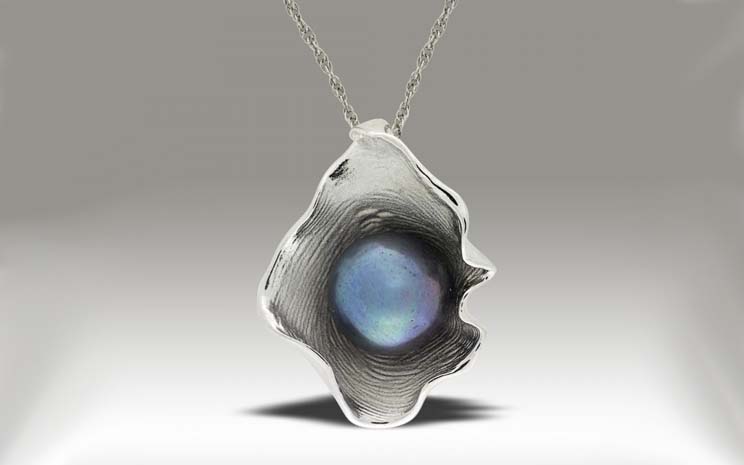
June's birthstone is PEARL!
Such a unique gem! For thousands of years people have treasured pearls as a means of adornment and status symbol. Royalty and high society from cultures around the world have long prized pearls as heirlooms, even going so far as to discover ways to create them when natural production began to decline in the early 1900s. Europeans believed pearls symbolized purity, chastity, and modesty. Ancient Chinese people used pearls as protection from fire and fire-breathing dragons, while other cultures associated the pearl’s shape with the moon.
When an irritant (a grain of sand or a parasite) gets inside a mollusk (oyster or mussel), it coats that speck with nacre [ney-ker] to protect itself. This process takes approximately two years and forms the pearl. The immense range of sizes, shapes, and colors depend on the conditions and the type of mollusk in which the pearl was formed. Natural pearls are rare, so most of the pearls you see in stores are cultured.
Cultured pearls are formed when humans introduce the irritant to the mollusk, usually a bead or piece of living tissue. There are four types of cultured pearls - Akoya, Tahitian, South Sea, and Freshwater.
Akoya pearls are cultured in saltwater and typically range from 6-7mm. Their colors include “white or cream yellow, pink or blue hues and overtones of pink or green.”
Tahitian pearls are another saltwater variety. These range in size from 8-14mm. Color profile includes “black, gray, silver, brown. Overtone colors can include blue to green, purple, yellowish green and pink.”
South Sea pearls are the final saltwater type. These pearls are usually 15mm or larger. Colors are “white, cream or silver, with orangy yellow or blue hues and overtones of pink, green or blue.”
Freshwater pearls are usually cultured in ponds or lakes. They can range in size from 4-14mm. Colors of this type are “white or cream with yellow, orange, pink or purple hues and overtones of pink, blue or green.”
The most surprising thing about pearl care is that they need a little moisture to remain in great condition. Pearls were made to be worn. The moisture on your body will keep them in great shape. Do not lock them away in a dry or airtight environment for long periods, as this can damage the nacre. Don’t use plastic bags or cotton wool for storage. Avoid ultrasonic and steam cleaners. Only use warm soapy water to clean your strands, but make sure they’re completely dry before wearing. Chemicals found in perfumes and hairspray corrode the surface; make sure your pearls are the last thing you put on and the first thing you take off. An excellent way to care for you pearls would be to wipe with a soft damp cloth after each wear.
The article comes from China Chang'an stainless steel jewelry manufacturer - A2A, the website is www.stainlesssteelacc.com .
Copyright © A2A All Rights Reserved | Sitemap